|
|
|
Sort Order |
|
|
|
Items / Page
|
|
|
|
|
|
|
| Srl | Item |
| 1 |
ID:
182847
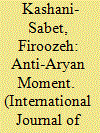

|
|
|
|
|
| Summary/Abstract |
In 1946, the entertainer and activist Paul Robeson pondered America's intentions in Iran. In what was to become one of the first major crises of the Cold War, Iran was fighting a Soviet aggressor that did not want to leave. Robeson posed the question, “Is our State Department concerned with protecting the rights of Iran and the welfare of the Iranian people, or is it concerned with protecting Anglo-American oil in that country and the Middle East in general?” This was a loaded question. The US was pressuring the Soviet Union to withdraw its troops after its occupation of the country during World War II. Robeson wondered why America cared so much about Soviet forces in Iranian territory, when it made no mention of Anglo-American troops “in countries far removed from the United States or Great Britain.” An editorial writer for a Black journal in St. Louis posed a different variant of the question: Why did the American secretary of state, James F. Byrnes, concern himself with elections in Iran, Arabia or Azerbaijan and yet not “interfere in his home state, South Carolina, which has not had a free election since Reconstruction?”
|
|
|
|
|
|
|
|
|
|
|
|
|
|
|
|
| 2 |
ID:
182843
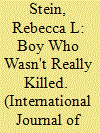

|
|
|
|
|
| Summary/Abstract |
Over the course of the first two decades of the twenty-first century, within the occupied Palestinian territories, photographic technologies and image-oriented politics would grow increasingly central as activist and human-rights tools of bearing witness to Israeli state and settler violence. This essay investigates the Israeli right-wing and international Zionist response to these Palestinian visual archives and their perceived threat. In particular, it tracks the rise and normalization of a repudiation script that impugned the veracity of these images, arguing that they were fraudulent or manipulated to produce a damning portrait of Israel. Drawing on post-colonial and settler-colonial studies, as placed into dialogue with digital media studies, the essay focuses on three cases studies of repudiation (2000, 2008, 2014, respectively) to consider how the long colonial history of repudiation in the Israeli context would be progressively updated by right-wing Israelis and their international supporters to meet the challenges posed by the smartphone age. By the second decade of the twenty-first century, the script had become an increasingly standard Zionist response to viral images of Palestinian death or injury at Israeli state or settler hands. Repudiation was thus marshaled as a solution to the viral visibility of Israeli state violence by bringing the otherwise damning images back into line with dominant Israeli ideology, a process of shifting the narrative from Palestinian injury to Israeli victimhood. The story of the “false” image of Palestinian injury endeavors strips the visual field of its Israeli perpetrators and Palestinian victims, thereby exonerating the state. Or such is the nature of this digital fantasy in the Israeli colonial present.
|
|
|
|
|
|
|
|
|
|
|
|
|
|
|
|
| 3 |
ID:
182846
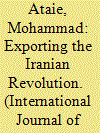

|
|
|
|
|
| Summary/Abstract |
From the dawn of the 1978–79 Iranian Revolution until the consolidation of Hizbullah in the late 1980s, a network of Iranian, Lebanese, and Palestinian clerics played a crucial role in spreading the revolution to Lebanon and laying the groundwork for Hizbullah. Whereas the historiography of the post-1979 Iran–Lebanon relationship is overwhelmingly focused on Hizbullah, the present study, by drawing on oral history interviews with these clerics and archival materials, contends that the Iranian Revolution came to Lebanon primarily through these Shi‘i and Sunni clerics, who joined ranks and established the Association of Muslim ‘Ulama’ in Lebanon in the wake of the 1982 Israeli invasion. This study argues that these clerics modeled their struggle on the ‘ulama’-led and mosque-based example of the 1978–79 revolution, which this paper describes as the Khomeinist script, to transcend sect to seed a revolution in Lebanon and mass mobilize against the invasion. This article concludes that the ecumenical script was highly appealing to non-Shi‘i Islamists, a key factor in the success of exporting the revolution and the rise of Hizbullah in Lebanon.
|
|
|
|
|
|
|
|
|
|
|
|
|
|
|
|
| 4 |
ID:
182841
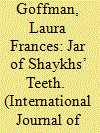

|
|
|
|
|
| Summary/Abstract |
This article examines ʿAbd al-Ilah al-Qinaʿi's early 20th-century melding of local, imperial, and transoceanic health practices alongside his 21st-century reemergence as a protonational Kuwaiti doctor. In the early 20th century, geographically and ideologically expansive horizons of health care fostered the emergence of hybrid medical practices. Facilitated by his access to multiple medical spheres and his proximity to Kuwait's rulers, ʿAbd al-Ilah was uniquely positioned to meet the demands of health-seeking consumers. In the 21st century, Kuwaitis' search for a national history that naturalizes claims to citizenship has resulted in ʿAbd al-Ilah's new designation as Kuwait's first doctor. Both processes—the interplay between local cultures of health and emergent institutions and the imagining of medical history as a nativist teleology—demonstrate how health-seeking and history-writing efforts of a range of historical actors have placed medicine at the center of politics in Kuwait.
|
|
|
|
|
|
|
|
|
|
|
|
|
|
|
|
| 5 |
ID:
182845


|
|
|
|
|
| Summary/Abstract |
The colonial history of Tunisia has long been dictated by colonial sources that made the qaid (an official in charge of fiscal attributions), from the viewpoint of the capital city, a local notable and often a prevaricator. This study proposes to reconsider the relationship between government and regional power in the colonial context by drawing on the recent work of Ottoman studies about provincial elites. The article studies the fiscal reforms of the interwar period in a cereal-growing region of Tunisia, relying on sources in Arabic produced by the qaids, namely the administrative correspondence between local authorities, the prime minister, and colonial controllers. This article describes the role of qaids in the negotiation between national law and local specificities and finally highlights the role of decentralization and a local way of thinking about the state in the 1930s. It contributes to colonial history and the history of taxation by highlighting the territorial fractures in North Africa and the agency of local actors under the protectorate.
|
|
|
|
|
|
|
|
|
|
|
|
|
|
|
|
| 6 |
ID:
182840
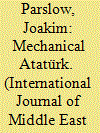

|
|
|
|
|
| Summary/Abstract |
Turkey's 1960 military coup d’état was received by Kemalists in the courts, bureaucracy, and universities as an opportunity to reinvigorate Atatürk's ideal of a centralized and rationally organized state. This article investigates how a handful of avant-garde thinkers sought to ride the post-1960 wave of reformism by promoting a techno-utopian approach to governance through publications and seminars aimed at state leaders and intellectuals. Cybernetics, they argued, offered a paradigm of adjudication and administration unblemished by association with the ascendant ideologies of the Cold War, whether socialist or conservative, and was fully in keeping with Kemalism. I argue that, although it remained largely at the stage of fantasy, Turkish cybernetics ultimately served as a set of metaphors with which conservative state thinkers from different political camps found common ground, facilitating the shift that occurred within the state during the 1970s away from the rights-based pluralism of the Constitution of 1961 and toward an effort to de-radicalize Turkish society, if necessary through violence.
|
|
|
|
|
|
|
|
|
|
|
|
|
|
|
|
| 7 |
ID:
182844
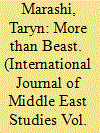

|
|
|
|
|
| Summary/Abstract |
Duldul, a beloved she-mule of the Prophet Muhammad and ʿAli b. Abi Talib (d. 661), fourth caliph and Muhammad's son-in-law, was a venerated riding beast in early Islamic tradition. The article argues that Duldul reflected the transmission of political authority and became a tool of legitimation for hadith compilers and medieval Muslim writers to use, contest, and navigate an emergent Shiʿa-Sunni rift. Exploring the responsive relationship between hadith construction and the Shiʿa-Sunni polemic, the article first analyzes three literary genres—maghāzī, hadith, and sīra—to describe Duldul and her role in early Islamic history. Second, the article examines the writings of al-Jahiz (d. 868) and al-Damiri (d. 1405) to understand medieval Muslim attitudes toward Duldul and she-mules in general. By taking Duldul more seriously as a historical actor, we can gain deeper insight into the disputes over Muhammad's legacy in medieval Islam.
|
|
|
|
|
|
|
|
|
|
|
|
|
|
|
|
| 8 |
ID:
182842
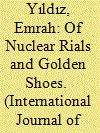

|
|
|
|
|
| Summary/Abstract |
Since the 2012 sanctions that dis-embedded the Iranian economy from global markets, contraband commerce has become an explosive issue in Iran. Increasingly Iranians came to regard sanctions as enforced by both international powers and their own state officials, who criminalized certain kinds of cross-border trade, but not others. Although Iranian state actors distinguish between the trader—praised for contributing to the economy—and the traitor—denounced for undermining its integrity—what both unites and blurs the line between them is their shared struggle with a devaluing currency that some Iranians call nuclear. This article examines the “nuclear rial” by extending insights from anthropological scholarship on money to the study of sanctions to advance a dynamic understanding of currency. Studying Iranian trade in gold proves productive for understanding how people negotiate the effects of sanctions in an unevenly financialized world. At stake in the negotiations is a conditional articulation of monetary value that relies on contingent conversions between commodities and currencies and among currencies.
|
|
|
|
|
|
|
|
|
|
|
|
|
|
|
|
|
|
|
|
|